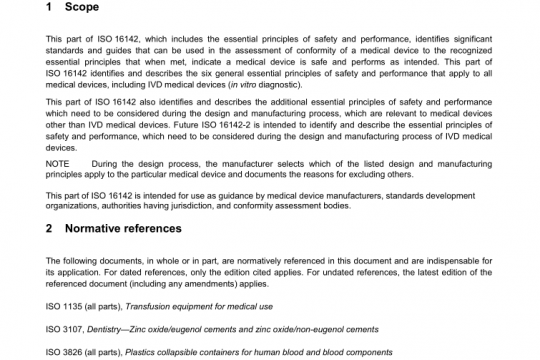ANSI AAMI ST40 pdf free download
ANSI AAMI ST40 pdf free download.Table-top dry heat (heated air) sterilization and sterility assurance in health care facilities.
2.19 major repair: Repair outside the scope of normal maintenance; any change to the sterilization system that could affect the efficacy of the process. In the case of a dry heat sterilizer, a major repair would typically involve the replacement or repair of critical components, such as element heaters, control boards, timers, or circulatory fans. 2.20 microorganism: Entity, encompassing bacteria, fungi, protozoa, and viruses, of microscopic size. NOTE—As used in health care, the term generally refers to bacteria, fungi, viruses, and bacterial spores. 2.21 office-based health care facility: Health care facility designed for short-term treatment of ambulatory patients (for example, free-standing surgical centers, clinics, and medical and dental offices). 2.22 personal protective equipment (PPE): According to OSHA, “specialized clothing or equipment worn by an employee for protection against a hazard. General work clothes (e.g., uniforms, pants, shirts, or blouses) not intended to function as protection against a hazard are not considered to be personal protective equipment” (29 CFR 1 91 0.1 030). 2.23 positive control: As the term is used in routine sterilization process monitoring, a BI, from the same lot as a test BI, that is left unexposed to the sterilization cycle and is then incubated to verify that the test BI is viable and that the incubation conditions are correct. 2.24 process challenge device (PCD): Item that is designed to simulate product to be sterilized and to constitute a defined challenge to the sterilization process and that is used to assess the effective performance of the process. 2.25 process time: See cycle time. 2.26 relocation: Act of moving a sterilizer from one location to another. In the case of a dry heat sterilizer, moving the sterilizer from one end of a countertop to the other or from one room within a practice to another typically would not constitute relocation. 2.27 sterile/sterility: State of being free from viable microorganisms. NOTE—In practice, no such absolute statement regarding the absence of microorganisms can be proven. See sterilization. 2.28 sterile storage area: Area of a health care facility designed to store clean and sterile items and protect them from contamination. 2.29 sterility assurance level (SAL): Probability of a single viable microorganism occurring on product after sterilization. NOTE 1 —SAL is normally expressed as 1 0 -n . NOTE 2—A SAL of 1 0 -6 means that there is less than or equal to one chance in a million that a single viable microorganism is present on a sterilized item. It is generally accepted that a SAL of 1 0 -6 is appropriate for items intended to come into contact with compromised tissue (that is, tissue that has lost the integrity of the natural body barriers). A SAL of 1 0 -3 (a one in a thousand chance of a surviving microorganism) is considered acceptable for items not intended to come into contact with compromised tissue.2.30 sterilization: Validated process used to render a product free from viable microorganisms. NOTE—In a sterilization process, the nature of microbiological death is described by an exponential function. Therefore, the presence of microorganisms on any individual item can be expressed in terms of probability. While this probability can be reduced to a very low number, it can never be reduced to zero. 2.31 table-top dry heat sterilizer: Compact sterilizer that has a chamber volume of 2 cubic feet or less and that uses electrically heated hot air as the sterilizing agent.ANSI AAMI ST40 pdf download.
Other IEC Standards
-

ANSI AAMI ISO 16142-1 pdf free download – non-IVD medical devices and guidance on the selection of standards
AAMI standards list DOWNLOAD -

ANSI AAMI ISO 16142-2 pdf free download – General essential principles and additional specifc essential principles
AAMI standards list DOWNLOAD


